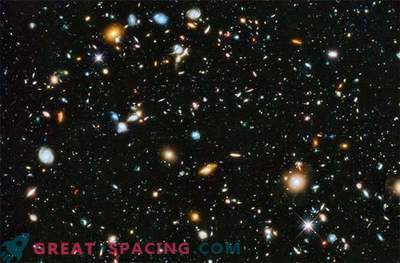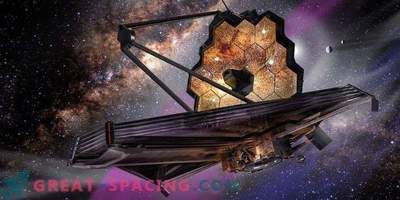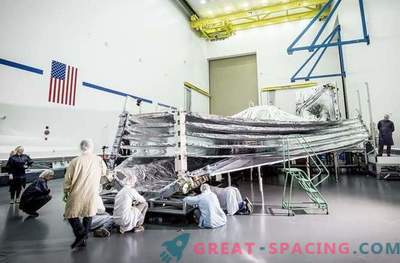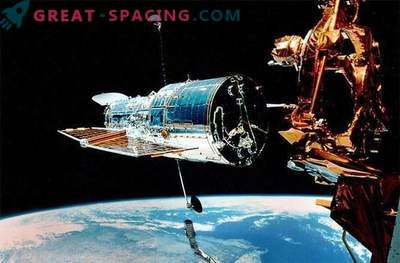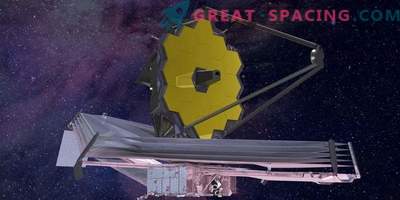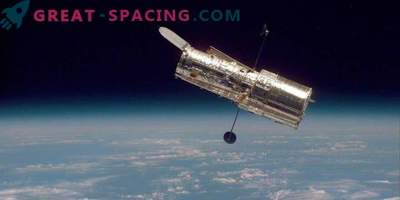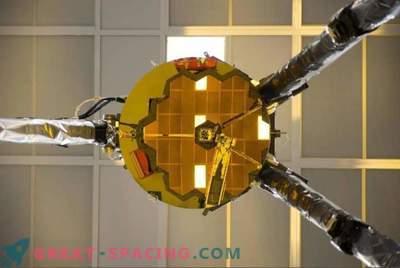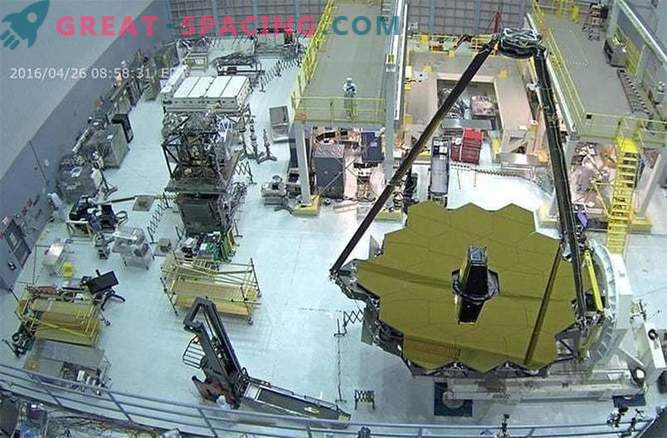
The Hubble Space Telescope revolutionized our view of the Universe in 26 years since it was launched in 1990. Although it shows some signs of aging, since NASA dismissed its space fleet of shuttles in 2011, it is still the most powerful space telescope in history and now it is left to itself, without any further maintenance missions, to extend its service life. In short, if something goes wrong, the mission veteran cannot be restored, and we lose our powerful eye in space.
Although the NASA / ENA joint mission is undoubtedly in its darkest period of development, there is a larger fellow who will take over the primacy when the Hubble mission ends. And as you can see from the above clean-room picture at NASA's Goddard Space Flight Center in Maryland, the James Webb Space Telescope (JWST) is wonderful.
JWST will be the most powerful space telescope ever launched. Working at wavelengths "beyond" the capabilities of Hubble, the joint mission of NASA, ESA, the Canadian Space Agency and the Space Telescope Science Institute, will observe the Universe in infrared light, revealing the earlier, first time galaxies formed at the beginning of time. Infrared light passes through even the most optically opaque molecular clouds, which gives us an incredibly high resolution and intimate look in the field of star formation. Although JWST does not "replace" Hubble, since it will not have access in the range of optical and ultraviolet wavelengths where Hubble worked so well, JWST will see further back in time and will give us a revolutionary picture of the infrared space. Consisting of 18 gold-plated hexagonal beryllium mirrors, collectively covering a diameter of 6, 5 meters (over 21 feet), JWST will surpass the Hubble mirror with a diameter of 2, 4 meters (7, 9 feet), giving JWST a 7 times greater light power collection . If the Hubble is the size of a school bus, then most of the JWST will be the size of a tennis court, and therefore an unconventional method of launching it into space will be required.
While Hubble was launched into orbit around Earth by the Discovery spacecraft on April 25, 1990, JWST will be launched far beyond the limits of the Moon’s orbit on an island of gravitational stability, to a point about 1.5 million miles from Earth in the direction of The sun, which is called the Lagrange point (or L2 point). Since any infrared telescope must have the lowest temperature possible, JWST has a huge sun protection and a sophisticated radiator system that will keep the telescope and instruments near the working temperature below 50 degrees Kelvin (-220 degrees Celsius, -370 degrees Fahrenheit) . Because of its size, JWST cannot be run in its working configuration; as an option, it will start the flight folded and, upon reaching the destination, it will unfold into a complex origami.
As shown by a series of photos from the clean rooms of the official version of JWST on Twitter, work is currently underway to attach telescope instruments to the rear of the ship. Over the past few months, each hexagonal mirror has been attached to the frame of the telescope, but each of them has a protective coating. To install the gauges, the entire spacecraft must be turned upside down, so that these covers must first be removed. Now we can see how the JWST telescope will look like when it is self-unpacked in space to begin work in 2018. In an interview with BBC News, a scientist at the European Space Agency's JWST project, Pierre Ferruit examined the problems of possible damage to extremely thin gold mirrors.
"The main danger is the accumulation of dust," he said. "But this is a clean room, so accumulation is very slow.
“They have to turn the telescope to gain access to the back, and the protective covers lie on the mirror segments, so they must be removed before rotating. When the mirror is upside down, the dust will be much less, and I doubt that anyone will be allowed to walk under him ".
After the equipment is attached to the mirrors, JWST will be subjected to vibration and cryo testing to simulate launch and extreme space conditions. After completing this over the next few months, the entire mass will be installed on the spacecraft-bus, which includes mission communication systems, flight computers and a large solar panel.
The mission is designed to launch in October 2018 on board the ESA Arianne rocket. Upon completion, it is assumed that JWST partners will spend $ 10 billion on the project.
